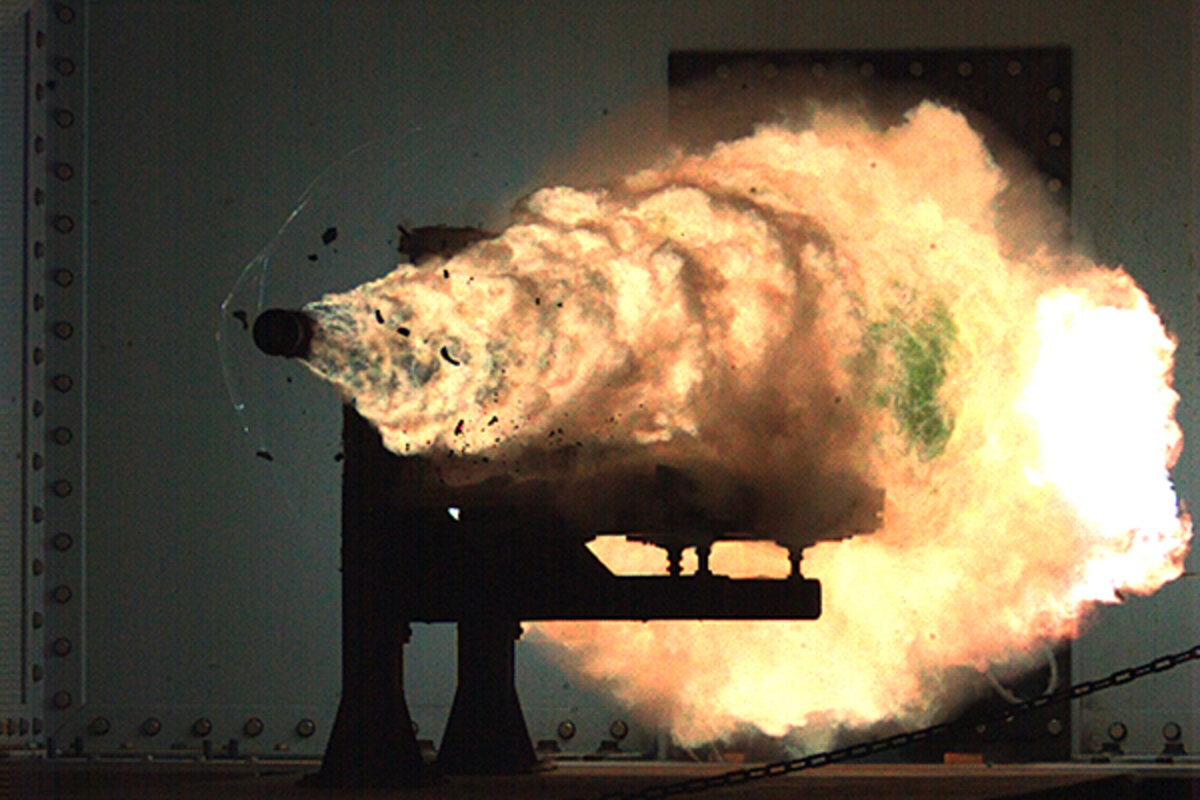NASA considering rail gun launch system
Loading...
The idea for using a rail guns to launch objects to has been around for years – even Isaac Newton considered the concept. But now a group of NASA engineers is seriously studying the possibility of using a as a potential launch system to the stars, and they are looking for a system that turns a host of existing cutting-edge technologies into the next giant leap spaceward. Stan Starr, branch chief of the Applied Laboratory at Kennedy Space Center said that nothing in the design calls for brand-new to be developed, but counts on a number of existing technologies to be pushed forward. He said developing such a system would be a “major technology revolution.”
“All of these are technology components that have already been developed or studied,” he said. “We’re just proposing to mature these technologies to a useful level, well past the level they’ve already been taken.”
A rail gun utilizes a magnetic field powered by electricity to accelerate a projectile along a set of rails, similar to train rails. One early proposal from the NASA group calls for a wedge-shaped aircraft with to be launched horizontally on an electrified track or gas-powered sled. The aircraft would fly up to Mach 10, using the scramjets and wings to lift it to the upper reaches of the atmosphere where a payload canister or capsule similar to a rocket’s second stage would fire off the back of the aircraft and into . The aircraft would come back and land on a runway by the launch site.
IN PICTURES: NASA's Future of Space Exploration
The engineers, from KSC and other NASA centers, contend the system, with its advanced technologies, will benefit the nation’s industry by perfecting technologies that would make more efficient commuter rail systems, better batteries for cars and trucks, and numerous other spinoffs.
For example, electric tracks catapult rollercoaster riders daily at theme parks. But those tracks call for speeds of a relatively modest 100 kpm (60 mph) — enough to make the ride exciting, but not nearly fast enough to launch something into space. The launcher would need to reach at least 10 times that speed over the course of two miles in Starr’s proposal.
The good news is that NASA and universities already have done significant research in the field, including small-scale tracks at NASA’s Marshall Center in Huntsville, Ala., and at Kennedy. The Navy also has designed a similar catapult system for its aircraft carriers.
As far as the aircraft that would launch on the rail, there already are real-world tests for designers to draw on. The X-43A, or Hyper-X program, and X-51 have shown that scramjets will work and can achieve remarkable speeds.
The group sees NASA’s field centers taking on their traditional roles to develop the Advanced Space Launch System. For instance, Langley Research Center in Virginia, Glenn Research Center in Ohio and Ames Research Center in California would work on different elements of the aircraft. Dryden Research Center in California, Goddard Space Flight Center in Maryland and Marshall would join Kennedy in developing the launch rail network. Kennedy also would build a launch test bed, potentially in a two-mile long area parallel to the crawlerway leading to Launch Pad 39A.
Because the system calls for a large role in aeronautic advancement along with rocketry, Starr said, “essentially you bring together parts of NASA that aren’t usually brought together. I still see Kennedy’s core role as a launch and landing facility.”
The Advanced Space Launch System is not meant to replace the or other program in the near future, but could be adapted to carry after unmanned missions rack up successes, Starr said.
The studies and development program could also be used as a basis for a commercial launch program if a company decides to take advantage of the basic research NASA performs along the way. Starr said NASA’s fundamental research has long spurred industry advancement, a trend that the advanced space launch system could continue.
For now, the team proposed a 10-year plan that would start with launching a drone like those the uses. More advanced models would follow until they are ready to build one that can launch a small satellite into orbit.
A rail launcher study using gas already is under way, but the team is applying for funding under several areas, including NASA’s push for technology innovation, but the engineers know it may not come to pass. The effort is worth it, however, since there is a chance at revolutionizing launches.
IN PICTURES: NASA's Future of Space Exploration
Source:




